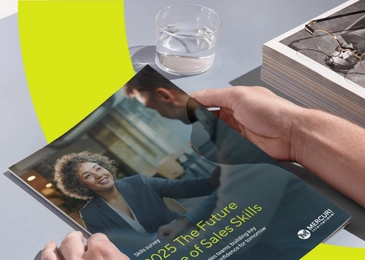The joint client visit is one of the most powerful tools in the sales manager’s toolkit. The most effective sales managers make good use of this tool and the best sales organisations make sure that joint visits feature strongly in their sales strategy.
We’ll look at the types of joint visits and at the most important things to get right before, during and after the visit.
There are five main types of joint visit. It is of course possible to have more than one purpose in an individual joint visit.

Supporter
Probably the most frequently used purpose in financial and professional services. The leader joins in at key points to provide expertise or handle complexity. The main focus is to win the business.
Ambassador
The main purpose here is to “fly the flag” for the organisation. The leader is there to explain policy, demonstrate the bank’s commitment and make the customer feel important.
Demonstrator
Here the leader’s main objective is to show the team member what good looks like and model best practice.
Investigator
The leader is getting out into the market place to understand client opinions, competitive situations etc. better.
Observer
The leader is there to observe the individual at work so that coaching can take place.
So what are the critical success factors for a professional joint visit?
Before the meeting
Make sure the salesperson is clear about why you want to accompany them. The best time to do this is in a one-to-one so that everything seems planned, integrated into sales coaching and not random.
It is worth planning a series of joint visits in the same day. We notice that many sales managers do one off joint visits for a specific purpose (e.g. support a sale) and could get their colleague to add in supplementary meetings either side of the core meeting to allow for coaching. Think about efficiencies and journey planning.
The client needs to be aware that the manager will be coming and why. It is the job of the relationship manager /sales-person to do this in most circumstances. One should always avoid the surprise “Oh there are two you!”
Agree roles and tactics in advance. This may even mead ensuring dress code is consistent. Usually the sales leader will be expecting the sales-person to take a lead early in the meeting so it is important to make this clear before the meeting.
Good briefing makes an enormous difference to the success of the call. The briefing should be concise but thorough focussing on the nature of the relationship, the current status, any usual points in culture or personality, live issues e.g. service, transactions, proposals, and some quick “do and don’t”.
During the meeting
Although you may be there as the “senior” person the “ownership” of the relationship needs to stay with the relationship manager or sales-person. They should be the prime point of contact for the client and need to remain so. That means the sales leader must not steal the show! The best practice for joint visits is when the RM makes the first contact (e.g. handshake) and introduces any colleagues (whether managers or product specialists). This is not to take precedence over a “senior” but to respectfully lead the contact. The leader is really there as the “servant” of the RM as they manage the relationship for the mutual benefit of the business and the client.
During the meeting the biggest single issue is usually the tendency of the leader to dominate the meeting. In particular the leader needs to be able to step back into the background after the part of the meeting where they stepped into the foreground (e.g. to explain the business’s position on a particular issue).
The best way to do this is with clear signalling e.g.
Turn to the RM and then say to the client “But when it comes to implementing all this your key point of contact will of course continue to be Mora” or
- “But I know Mora has excellent experience in this area too. How do you think all this will apply here at XYXCo?)
- Use eye contact. Fix your eye contact on the client and ensure they are looking at you. Then deliberately turn to look at the RM. You almost always take the client’s eye contact from you to the RM.
- Use “name first / name second”. Using the name first means the requested action is mandatory; using second means it is optional. So the RM says to the leader “John, would like to comment on that?” Using the name first means this is a cry for help. The leader must come in and help. However, name second (as in “Would you like to add anything here John?”) means the RL is OK and the SL can intervene only if they want to. Equally if one person is about to say something that will cause a real problem and needs to be stopped, the other person uses name first: “John I’d like to make a point…” The speaker hears name first and must stop immediately and give way. Name second (“could I add a point here John?” does not require that the speaker stop straight away. They can acknowledge the request and give way in a few sentences.
- At the end of the meeting it should be the RM who wraps things up, confirms the next actions and has the final handshake.
Giving feedback
Try to do this as soon as possible after visit but find somewhere private to do it. Try and say what you saw rather than what you felt. Be factual and accurate (“I heard you ask the client xyz” rather than “I felt you did not connect with the client”. Talk about positives as well as negatives. Use questions to get the individual to reflect on the meeting: e.g. Can you remember what you said next?” Be ready to demonstrate the points you make.
Agree together on improvements. Use the pattern “incident – impact –improvement”. What happened? What effect di that have on the client/the meeting etc.? What could the individual do to improve next time?
Conclusion
Joint visits can make an immense difference to sales performance. Use them well!
Written by Richard Higham


